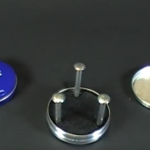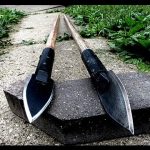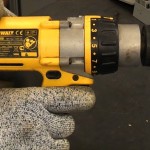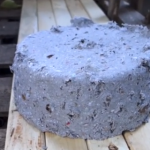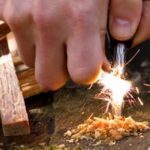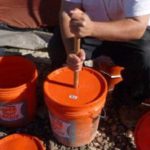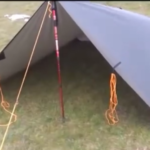In a survival situation, traps can capture animals that provide us precious calories from meat and fat. Think of them as little hunters that you put out to do your work for you while you are off accomplishing other tasks. There are seemingly as many different traps as there are creatures to catch, but we’ve selected 15 for you to try and master.

There are seemingly as many different traps as there are creatures to catch, but we’ve selected the 15 best snare and deadfall traps for you to master.

-
Rolling Snare
This snare uses a pair of wooden hooks to trigger a motion-activated spring pole snare trap. You’ll need a spring pole, a snare line with noose, a hook to drive into the ground, and a hook to tie to the snare line. This trap is ideal for trails and runs.
Find a forked branch about one to two inches in diameter. Cut a point on the non-forked end and drive it into the ground near the edge of a small-game trail. Find a similar, smaller fork to tie to the snare line. Engage the two hooks so that the free one will roll off the hook that is staked to the ground, NOT so they will hook together which would prevent the trap from going off. Set your noose in the trail, propped up with twigs or tied in place with thread. No baiting is required.

-
Figure 4 Deadfall
Tricky to carve, the figure 4 deadfall has bested more than a few would-be trappers. But, on the bright side, you only need the deadfall weight, three sticks and some bait. A rock works best for the weight, and it should have a square edge on it so that it stably sits on the ground. The three sticks should be perfectly straight, and about the same diameter and length. Finger-thick and one-foot long will work for most deadfall triggers.
Carve a flat screwdriver point on one stick, which will become your vertical post. Carve another screwdriver point on one end of a stick and a notch near the opposite end. This will be your diagonal stick. Carve a notch at one end of the third stick, and make a point with the opposite end to receive bait. Now comes the tricky carpentry. Lay out the sticks to make a “number 4” shape. Square up the vertical post and cut a notch on the horizontal bait stick so that it catches the square edge you carved on the post. Now try to put all three sticks together so that the notches catch each other and hold up the deadfall weight. If it doesn’t hold, re-carve any spots that won’t hold. If it does work, bait the trap and put it to work. Survive any wilderness situation with these critical tips.

-
Figure 4 Snare
The figure 4 snare combines the sensitive leverage trigger of the figure 4 deadfall, with the snagging capability of a spring pole snare. For this trap, you’ll need a good, snappy spring pole, snare line with noose and a side line to the trigger, bait, and the three sticks to make the “4.”
Get started by tying the snare line to the end of your spring pole. Make sure the pole has enough lifting power. Then drive the vertical piece of the figure 4 deep into the ground. This member is holding the energy of the spring pole, so drive it a foot deep to keep it from being pulled up out of the ground. Assemble the figure 4 by notching the vertical and horizontal pieces to receive the diagonal. Bait the trap, tie on the trigger line, and suspend the noose with a pair of twigs.

-
Pine Pitch Bird Cup Trap
This unorthodox trap isn’t an animal killer like the rest, which has its good and bad points. The traditional native version involved a small cone of birch bark, stitched together so it looks like an ice cream cone. The interior is smeared with sticky pine pitch, with bird seed stuck inside the cone. The cone is placed on its side, and additional seed is scattered around the cone to entice the birds. When the bird finishes eating the seeds outside of the cone, it should start pecking at the seed inside. With pitch on its head and feathers, the bird becomes disoriented and unable to fly away. Dixie cups and other small cups can replace the traditional bark cone for emergency trapping today. Not legal—and very messy—this method is still something to consider in a severe emergency.

-
Paiute Deadfall
This Native American trap is fast-acting when set correctly. For an average-sized rodent like a rat or prairie dog, you’ll need an eight-inch-long “Y” shaped stick, a straight stick thicker than a pencil and about nine inches long, a two-inch-long stick that is a little skinnier than a pencil, a slender bait stick that is half the diameter of a pencil and about 12 inches long, some critter bait, about 8 inches of string, and a flat rock that is 5 to 10 pounds.
To set it all up, take your nine-inch straight stick (the lever) and tie one end of the string to it. Tie the other end of the string to the two-inch stick (the toggle). Square knots are fine for each end of the string. Wipe or skewer the bait on one end of the 12-inch bait stick. Now you are ready to set it all up. Stand up the “Y” stick (the post) by the edge of the rock. Put the string-less end of the lever in the fork of the post, with about 1 inch sticking out toward the rock. Lift up the rock and place it on the tip of the Lever. Next, you’ll wrap the two-inch toggle halfway around the post. It’s basically a 180-degree turn. Now you should be able to hold up the rock by just holding the toggle. The final step is to place the baited end of the 12-inch bait stick between a rough spot under the stone and the tip of the toggle. It’s good to scope out this crack or crevice before setting up the trap. When you can let go of the trigger stick and the rock stays up in the air, you’ll know you did it right.

-
Greasy String Deadfall
For millennia, our ancestors have trapped with very little gear. This bait driven is the least complicated trap in the gallery, consisting of a forked stick, a deadfall weight, a length of thin twine and some bait. The forked stick will work best if the forks end up parallel, with one long fork leg and a shorter one. The twine could be hand woven in the field, or you could use a piece of jute. The bait is mushed into the twine, and if all goes right, the animal will be under the deadfall chewing on the twine when it breaks.
To make this trap, tie one end of the twine to a root, sapling trunk or peg in the ground; and tie the other end of twine to the shorter fork of the forked stick. Place the deadfall weight in position so you can determine where to place the bait. Squish the bait into the twine deeply and replace the rock.

-
Toggle Deadfall
The toggle deadfall uses some string and a toggle to hold the weight up in the air for this motion sensitive trap. This deadfall works best with a log as the weight. You’ll need the log, about a foot of cord, a pencil-sized toggle stick, a trigger stick, and a support to hold the log up in the air.
Start by tying your cord to the end of the toggle stick and the end of the log. The toggle then laps over the support, which can be the top of a stake or a horizontal branch on a shrub. Place the trigger stick so that it holds the end of the toggle and is in the path of the animal. Set the trigger low and set the trap in the animal’s trail. When the animal pushes the trigger down, the toggle and log are released.

-
McPherson Spring Deadfall
This trap from John and Gerri McPherson’s book, Primitive Wilderness Living & Survival Skills, is one of the more complicated deadfalls that you can build. But with a little work, the explosive firing mechanism unleashes a lightning-quick deadfall action. This trap requires a two- to three-foot spring pole, a two-foot length of cord, a one-foot length cord piece, a small peg driven into the ground, a sharpened toggle, a deadfall support stick, a few inches of twine ,and some bait.
Find two small trees or shrubs just inches apart, then tie the end of your spring pole to both. Tie your two-foot cord to the free end of the spring pole and the sharpened toggle. Pull the toggle so that the spring pole bends about two or three feet. Drive your peg into the ground there, flush with the soil. Dig out a tiny bit around the peg so a slack loop of twine can be tied around its end. The sharpened toggle is baited and then it goes into the small twine loop around the peg in the ground. Place the deadfall weight over the trigger area, propped up with the support stick. Tie your one-foot cord to the support stick and the longer cord, so that the main cord pulls the support stick out from under the deadfall when the trigger is tripped. Survive any wilderness situation with these critical tips.

-
In a survival situation, traps can capture animals that provide us precious calories from meat and fat. Think of them as little hunters that you put out to do your work for you while you are off accomplishing other tasks. There are seemingly as many different traps as there are creatures to catch, but we’ve selected 15 for you to try and master.





 Peg Snare
Peg Snare  Drowning Snare
Drowning Snare  Treadle Snare
Treadle Snare 




